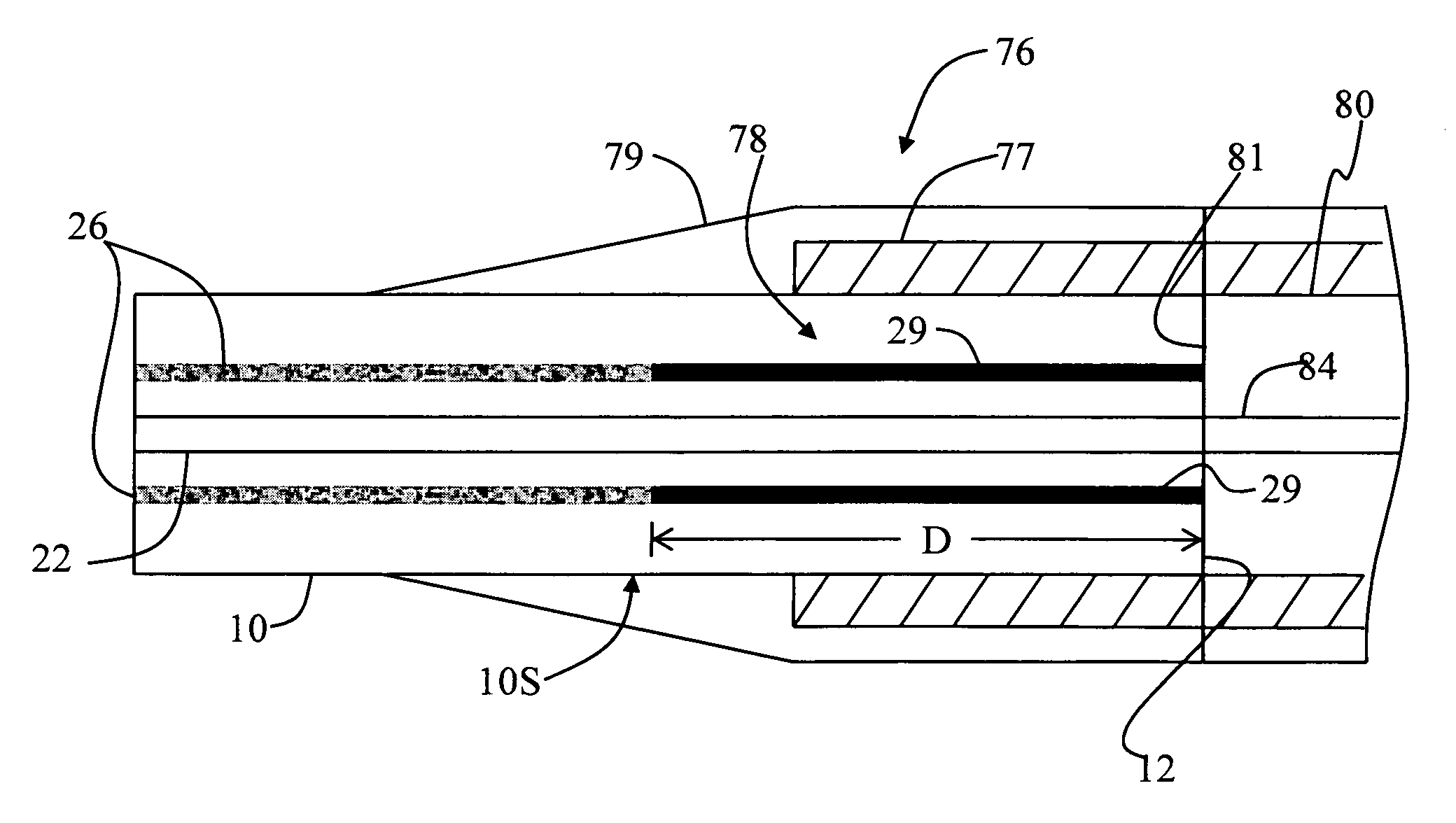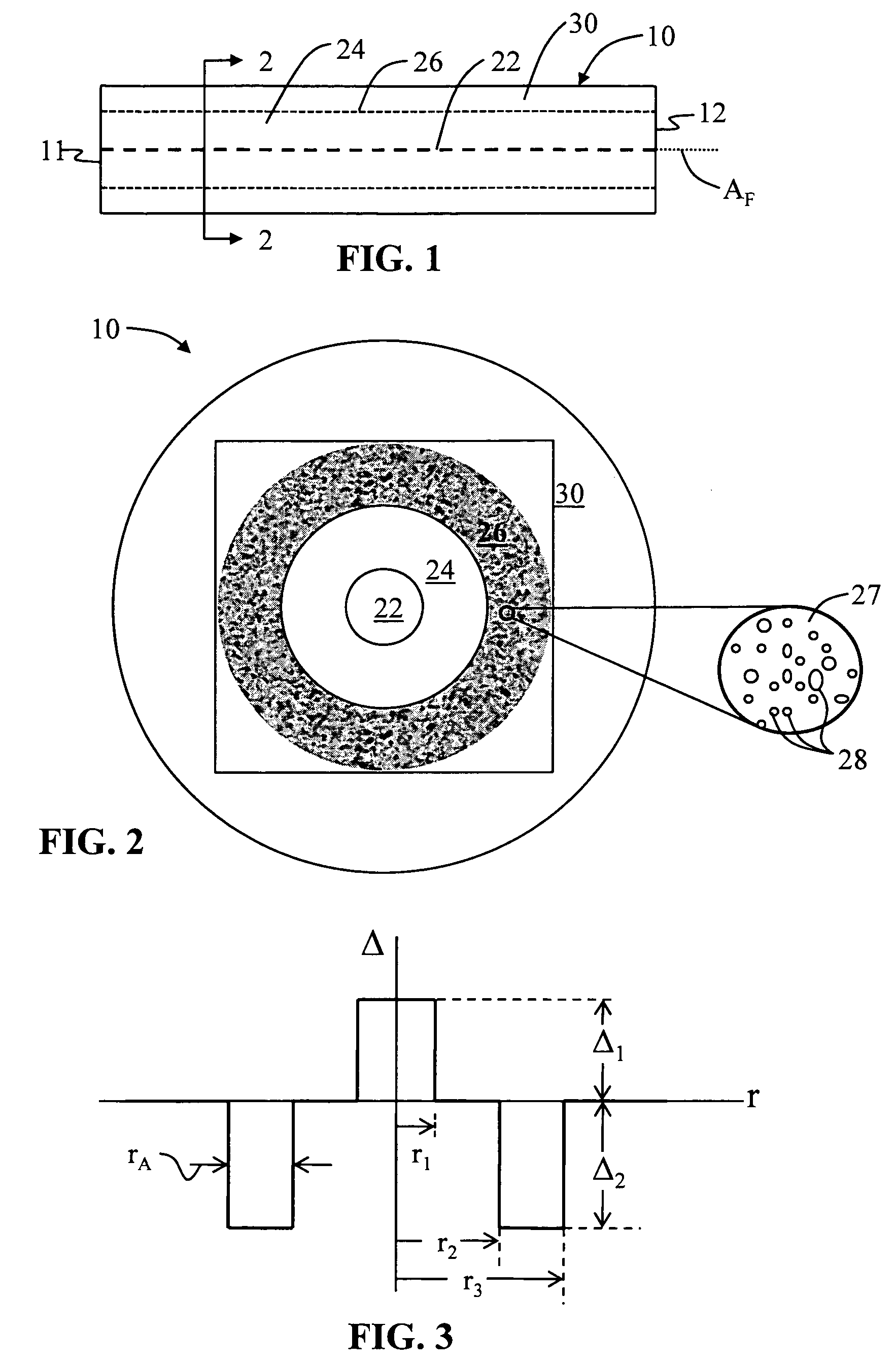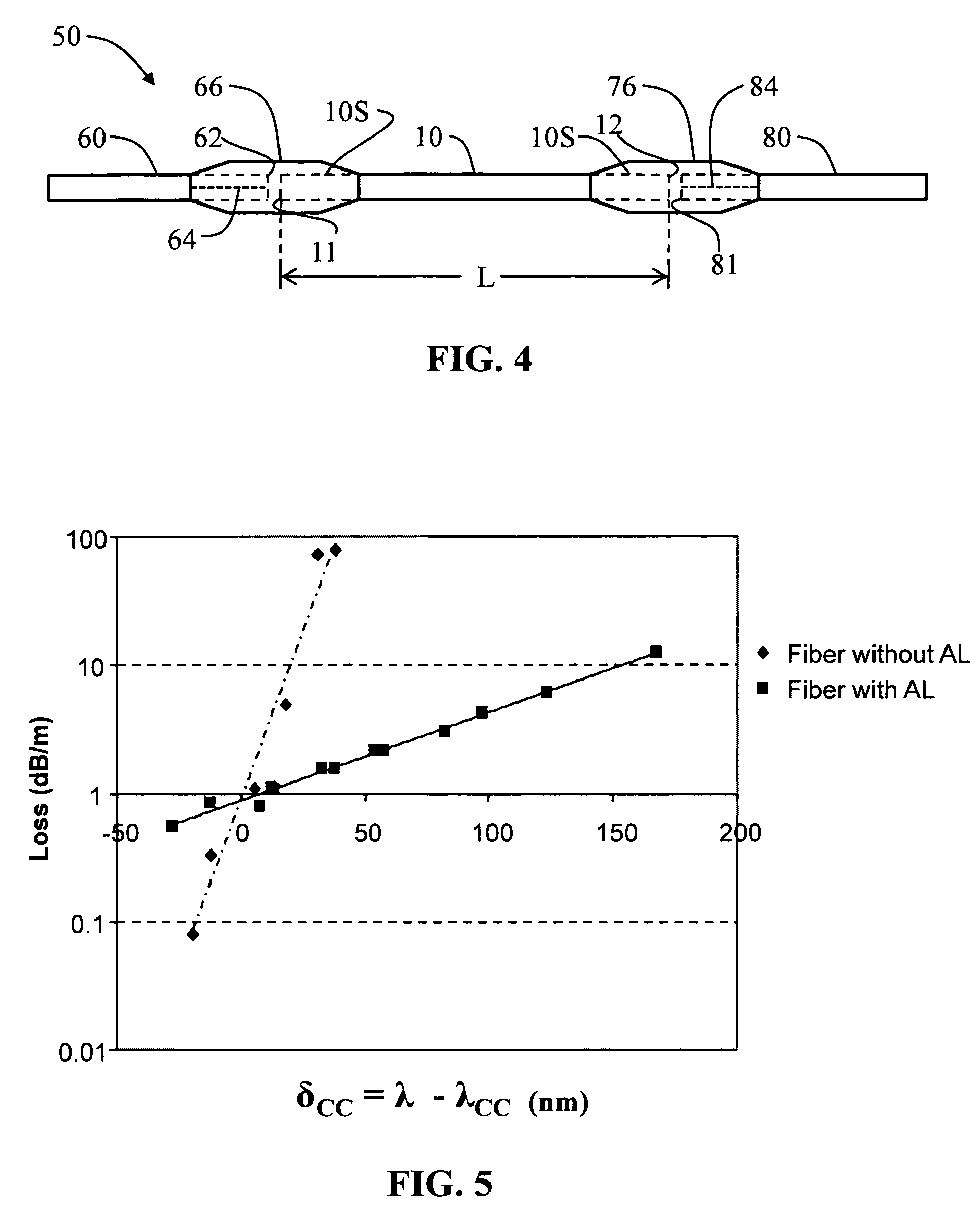Airline optical fiber with reduced multipath interference and methods of forming same
a multi-path interference, airline technology, applied in the direction of optical light guides, optical waveguide light guides, instruments, etc., can solve the problems of multi-path interference (mpi) in the fiber system, power fluctuations and noise, airline rings can trap higher-order modes, etc., to achieve the effect of reducing multi-path interferen
- Summary
- Abstract
- Description
- Claims
- Application Information
AI Technical Summary
Benefits of technology
Problems solved by technology
Method used
Image
Examples
Embodiment Construction
[0030]Reference is now made in detail to the present preferred embodiments of the invention, examples of which are illustrated in the accompanying drawings. Whenever possible, the same reference numbers and symbols are used throughout the drawings to refer to the same or like parts.
[0031]In the discussion below, the “refractive index profile” is the relationship between refractive index or relative refractive index and waveguide fiber radius. The “relative refractive index percent” is defined as Δ(%)=[(ni2−nc2) / 2ni2]×100, where ni is the maximum refractive index in region i, unless otherwise specified, and nc is the average refractive index of the cladding region (e.g., the outer cladding region, as discussed below). As used herein, the relative refractive index percent is represented by “Δ” and its values are given in units of “%” unless otherwise specified or as is apparent by the context of the discussion.
[0032]In cases where the refractive index of a region is less than the aver...
PUM
| Property | Measurement | Unit |
|---|---|---|
| depth | aaaaa | aaaaa |
| wavelength | aaaaa | aaaaa |
| wavelength | aaaaa | aaaaa |
Abstract
Description
Claims
Application Information
 Login to View More
Login to View More - R&D
- Intellectual Property
- Life Sciences
- Materials
- Tech Scout
- Unparalleled Data Quality
- Higher Quality Content
- 60% Fewer Hallucinations
Browse by: Latest US Patents, China's latest patents, Technical Efficacy Thesaurus, Application Domain, Technology Topic, Popular Technical Reports.
© 2025 PatSnap. All rights reserved.Legal|Privacy policy|Modern Slavery Act Transparency Statement|Sitemap|About US| Contact US: help@patsnap.com



